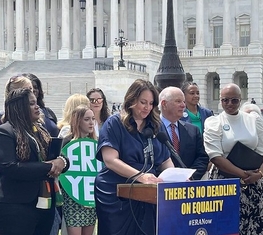Election Rapid Response: Spotting Voter Intimidation
How to notice and identify voter intimidation on the ground during the election season.
The Right to Vote Is Protected from Intimidation & Harassment
- Federal law makes it a crime to intimidate, harass, or deceive voters at home or the polls
- State law often separately prohibits voter intimidation and harassment
Spotting Voter Intimidation
Groups and individuals may try to
- Threaten voters for exercising their right to vote
- Threaten volunteers for registering people to vote
- Falsely identify themselves as election officials
- Aggressively ask about someone’s voting record
- Demand validity of someone’s registration status
- Accuse volunteers or voters of committing voter fraud
- Spread misinformation about how personal information is used
- Make phone calls warning voters not to vote
- Act deceptively to make voters fear voting
Know Your Rights
You may
- Request identification from alleged election officials
- Ask a poll monitor to double-check their registration list
- Document incidents thoroughly using your phone (outside the polling place) or by taking notes
- Avoid engaging with groups or individuals employing intimidation
- If a voter’s registration is still denied, they can offer an affidavit or cast a provisional ballot
Report
Report incidents of voter intimidation to your local election officials, Election Protection (866-OUR-VOTE), and your local and/or state League leaders. Check out our guide for setting up your rapid response network here.
LWVUS has a system in place to ensure reports of pervasive voter intimidation are elevated and receive appropriate responses. This includes potential communications and legal responses.
LWVUS has partnered with the legal partners Free Speech for People and Akin Gump to protect the right to vote and to respond to incidents of intimidation.
Related Content
LWVUS is coordinating directly with state leaders on election-related issues and concerns.
How to respond publicly to election issues on the ground during the election season.
When we talk about voters, it’s important to our mission that we use empowering language. These tips can help enhance the way we speak about voters in our public messaging.




